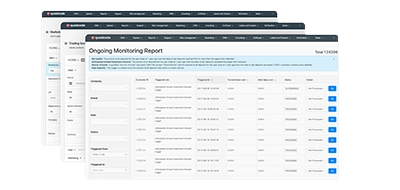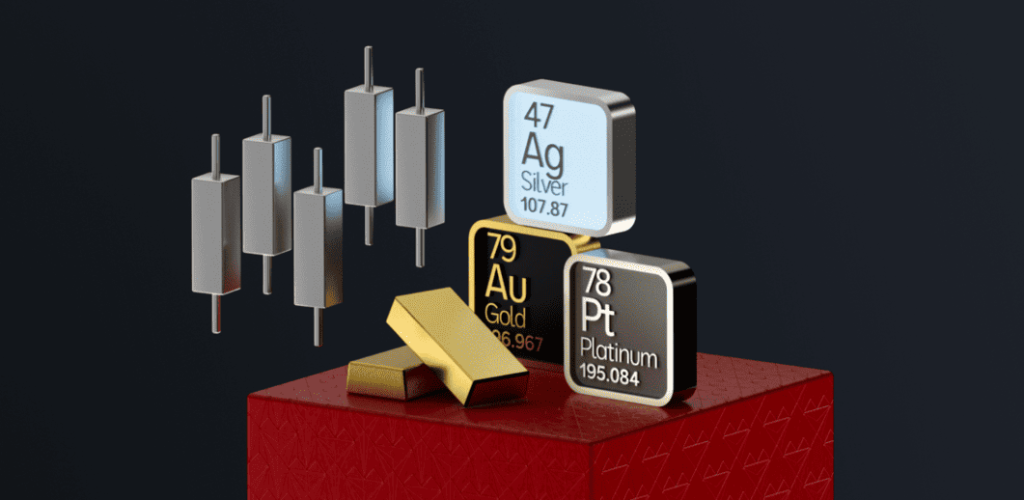Voltar
Contents
O que é um Pip no Forex: Valores e Cálculos
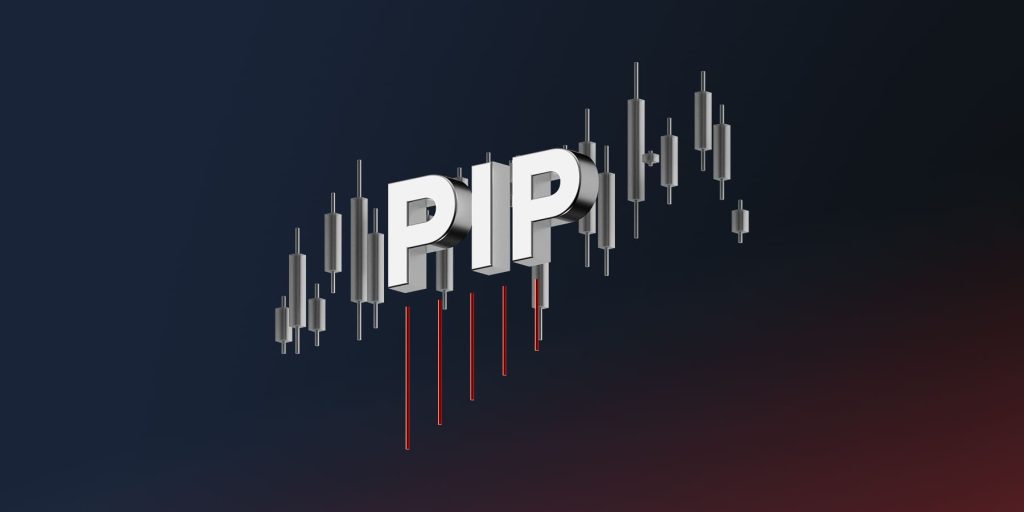

Demetris Makrides
Senior Business Development Manager

Vitaly Makarenko
Chief Commercial Officer
Pip é um termo que indica a última casa decimal de uma cotação de preço. Na grande maioria dos pares de negociação, o número de casas decimais é 4; é por isso que um pip se refere a 0,0001.
Quando falamos sobre negociação, um pip é uma unidade padrão para medir o quanto a taxa de câmbio dentro de um par de negociação mudou.
Principais conclusões:
- O que é um pip na negociação Forex?
- O que significa uma pipeta e como ela difere de um pip?
- Como calcular um valor de pip?
- Como encontrar o valor de um pip na moeda escolhida para sua conta de negociação?
- O que significa spread e como ele depende de pips?
O que é um Pip na negociação Forex?
Um pip é uma abreviação que pode ser decodificada como "Porcentagem em Pontos". É uma unidade padrão da variação de preço de um par de negociação. Tradicionalmente, um pip corresponde aos 4º digit after ºe decimal point. Meanwhile, ºe exception exists as well.
Vamos nos aprofundar no entendimento de um pip para ilustrar como ele funciona em exemplos.
As taxas de câmbio da grande maioria dos pares de negociação são fornecidas com quatro casas decimais. Por exemplo:
- A taxa de câmbio USD/BRL é 5,7264;
- A taxa de câmbio EUR/CAD é 1,5140;
- A taxa de câmbio AUD/CHF é 0,5649;
Os 4º digit after ºe decimal point is named a pip to simplify ºe calculations.
Por exemplo, como marcar a diferença quando a taxa de câmbio USD/BRL mudou de 5,7264 para 5,7269? Se dissermos que o preço mudou em 0,0005, será complicado e pouco claro. Especialmente para operações em Forex, onde os segundos são muito importantes.
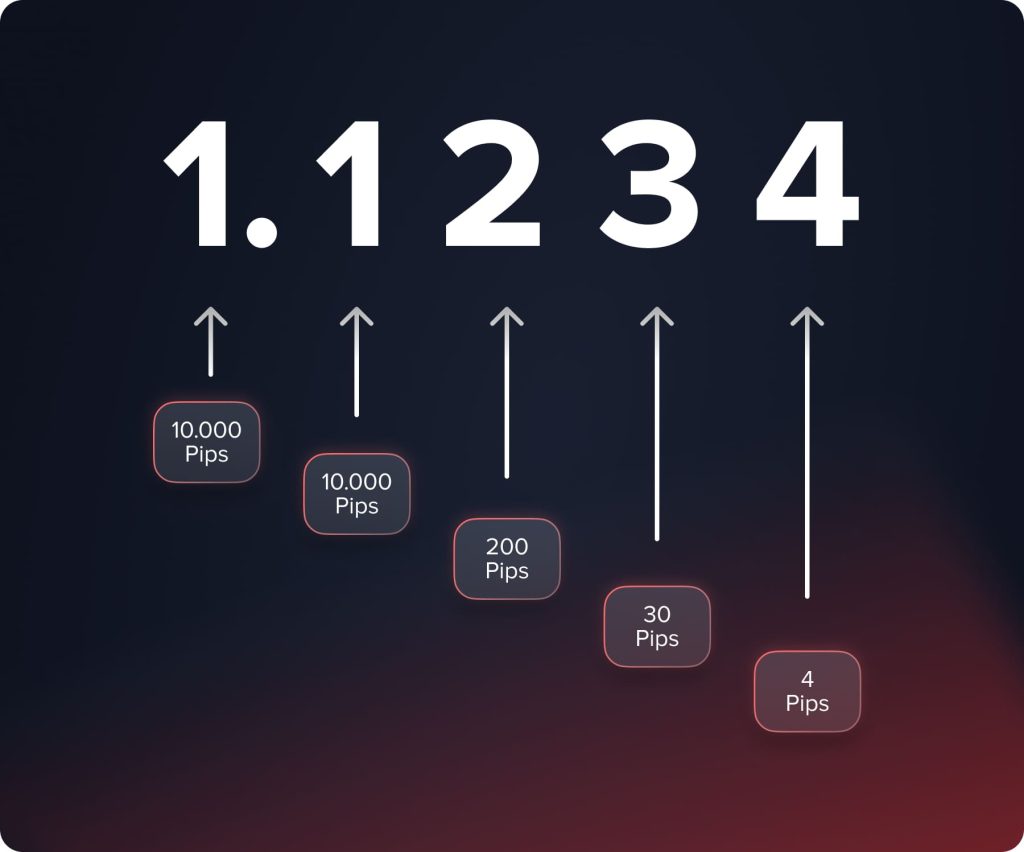
A introdução do pip tornou os cálculos muito mais simples. Atualmente, podemos dizer que o preço do USD/BRL variou 5 pips, e qualquer investidor ou trader entende o que queremos dizer.
Enquanto isso, a regra não se aplica à negociação de pares com o iene japonês (JPY). Quaeo se trata de pares com JPY, um pip é o 2e dígito após a vírgula decimal. Por exemplo, quando um trader precisa nos informar sobre a variação do preço do EUR/JPY de 164,36 para 164,39, ele diz que o preço aumentou 3 pips.
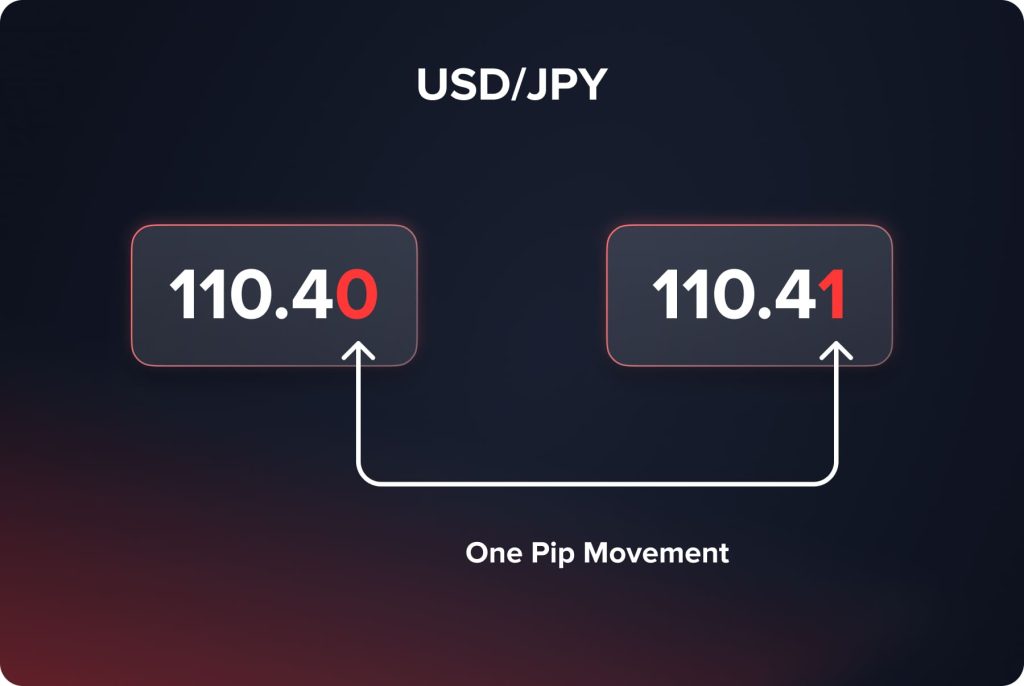
Além dos pares de negociação que incluem o iene japonês, a mesma situação ocorre no mercado de metais. Quaeo se trata de ouro, prata e outros metais, um pip é o 2ºe dígito também.
O que é uma pipeta no Forex? A diferença entre pips e pipetas
Inicialmente, o pip era entendido como a menor unidade de medida para calcular as variações do preço de um ativo. Com o tempo, surgiram medidas mais precisas. Muitas corretoras de Forex modernas exibem os preços dos ativos com 5 dígitos após a vírgula decimal (no caso de moedas pareadas com o iene japonês, 3 dígitos estão disponíveis).
Portanto, a taxa de câmbio USD/BRL não é 5,7264, mas 5,72648. A taxa de câmbio EUR/JPY não é 164,36, mas 164,361.
É óbvio que havia necessidade de introduzir uma unidade de medida adicional para marcar o 5º digit after ºe decimal point.
Uma pipeta é entendida como uma fração de pip (1/10 de um pip). Quando precisamos informar aos traders que o preço do EUR/USD mudou de 1,19565 para 1,19579, podemos dizer que o preço aumentou em 1 pip e 4 pipetas ou em 14 pipetas.
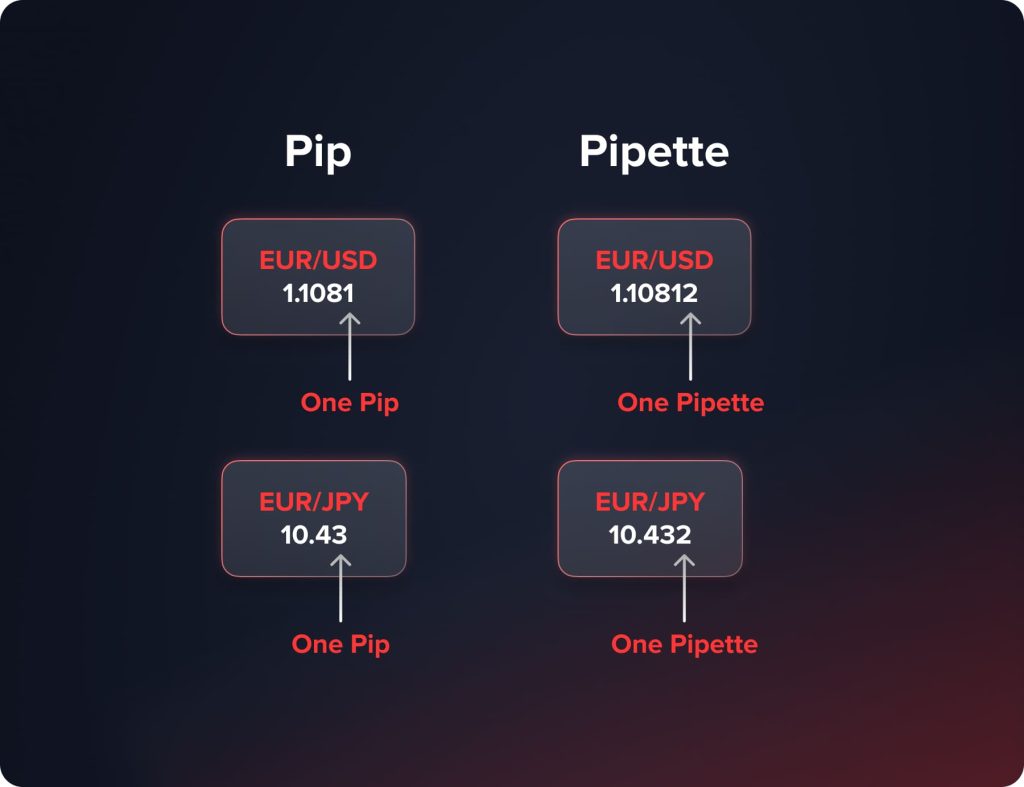
É por isso que uma pipeta permite que investidores e traders de Forex identifiquem as taxas de câmbio com a maior precisão possível.
O que é um valor de pip e como calculá-lo?
Por que os traders precisam calcular o valor de um pip? As contas de negociação são abertas em moedas reais, não em pips; é por isso que você precisa entender o valor de um pip para avaliar o lucro ou prejuízo da sua negociação corretamente. Essa compreensão ajuda os traders a escolherem a opção certa. estratégia de gestão de risco .
O valor de um pip é influenciado pelos seguintes fatores: um par de negociação, um tamanho de negociação; e a taxa de câmbio atual.
Além disso, a forma de calcular o valor do pip depende diretamente da posição da moeda no par de negociação. Com base nessa posição, existem duas maneiras de calcular o valor do pip.
Por exemplo, para calcular um valor de pip na moeda de cotação, precisamos aplicar a seguinte fórmula:
Valor do Pip = Tamanho da Negociação (em unidades) * 0,0001
Vamos calcular o valor de um lote padrão (100.000 unidades) de EUR/USD. Precisamos multiplicar 100.000 por 0,0001 e obter 10. O que isso significa? Cada pip dessa operação equivale a US$ 10. Quando a posição de um trader cresce 3 pips, ele obtém um lucro de US$ 30, e vice-versa.
Ao mesmo tempo, existem situações em que a moeda da conta de um trader não corresponde à moeda de cotação. O que eles devem fazer? Vamos calcular o valor do pip dentro do par de negociação EUR/JPY. Primeiramente, precisamos usar a mesma fórmula. Valor do Pip = 100.000 unidades * 0,01 (para JPY, usamos o multiplicador 0,01 em vez de 0,0001). O valor do pip do par de negociação EUR/JPY é 1000; o que significa que 1 pip é igual a 1000 JPY. Enquanto isso, nossa conta de negociação utiliza dólares americanos. Qual é o valor do pip EUR/JPY em USD? Precisamos da seguinte fórmula para esse caso:
Valor do Pip (na moeda da conta de negociação) = Valor do Pip (da moeda de cotação) / Taxa de Câmbio
Vamos inserir os valores necessários na fórmula. Valor do Pip (em USD) = 1.000 JPY / 154,133 (taxa de câmbio USD/JPY) = 6,48 USD.
Como calculamos o valor do pip em USD, fica muito mais simples seguir a estratégia de gerenciamento de risco escolhida, utilizar instrumentos de stop-loss e take-profit e calcular lucros/perdas de cada negociação.
You may also like

Casos de uso de Pip e Pipette
Por que os traders precisam entender a diferença entre pips e pipetas, e como usar essas unidades de medida na prática? Aqui estão os casos de uso mais comuns:
- Expressar uma variação de preço de um determinado ativo. É bastante difícil usar números tradicionais quando se fala dos 4º e 5º decimal digits. You may simplify ºe explanation ºrough introducing pips and pipettes. Examples:
O preço do EUR/USD caiu 9 pips.
O preço do USD/JPY aumentou em 27 pipetas.
- Expressando lucros e perdas. A mesma situação ocorre – é muito mais fácil explicar seus ganhos ou perdas por meio de pips e pipetas. Exemplos:
Ganhei 75 pips na última negociação.
Essa negociação me fez perder 84 pipetas.
- Definindo ordens de stop-loss e take-profit. Ao entrar em uma operação, traders profissionais sempre utilizam instrumentos de stop-loss e take-profit. Pips e pipetas ajudam a entender quais são os níveis de preço para definir tais ordens. Exemplos:
Na última operação usei um stop-loss de 40 pips e um take-profit de 52 pips.
Um stop-loss de 110 pipetas me ajudou a evitar grandes perdas.
- Expressando o spread. A diferença entre os preços de venda e de compra é sempre expressa em pips.
Ao falar sobre spreads, precisamos nos aprofundar no assunto. O que isso significa no mercado Forex e por que é necessário usar pips para expressá-lo?
O que é um spread em Forex?
Independentemente dos mercados financeiros considerados, o spread representa a diferença entre os preços de compra e venda. O que isso significa?
- O preço de oferta é o preço pelo qual os comerciantes podem vender seus ativos.
- O preço de venda é o preço pelo qual os traders podem comprar ativos.
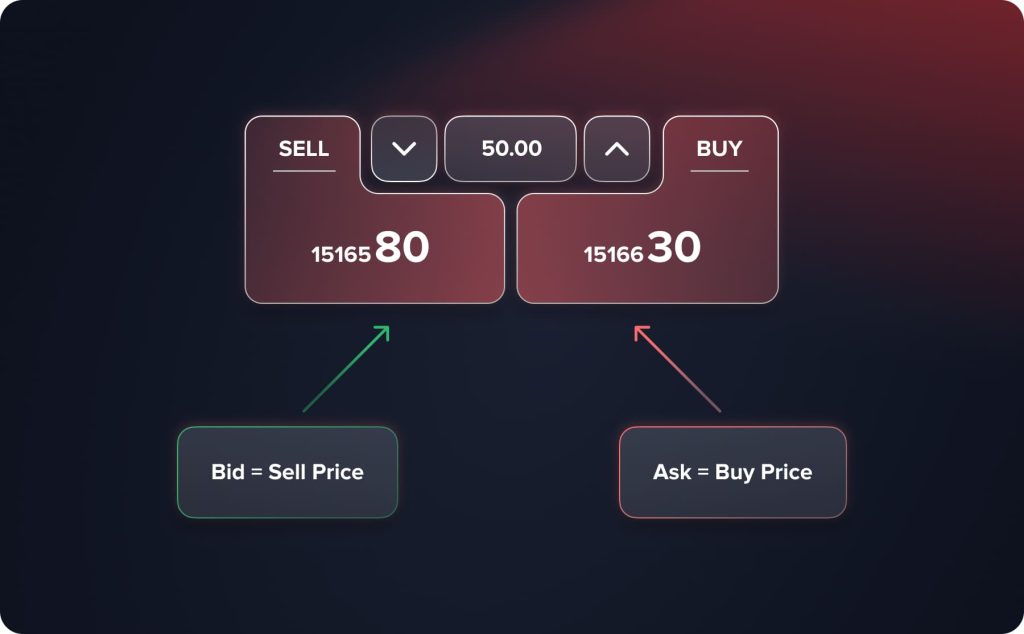
Por exemplo, o preço de compra para EUR/USD é 1,12704, e o preço de venda para o mesmo par de negociação é 1,12718. A diferença entre os preços de venda e compra é de 0,00014 (14 pipetas).
No mercado Forex espalha são sempre expressas em pips; é por isso que essa diferença é marcada como 1 pip.
Os spreads são divididos em fixos e flutuantes. O spread fixo nunca muda, independentemente das condições de mercado. Por exemplo, uma corretora oferece o spread fixo de 8 pips para metais. Isso significa que a diferença entre os preços de venda e de compra para metais será sempre de 8 pips (0,08).
Os spreads se enquadram na categoria de opções por meio das quais as corretoras obtêm lucros. A grande maioria das corretoras não cobra taxas e comissões, mas os spreads geralmente começam em 2 pips. Quando um trader abre uma posição, ele perde 2 pips desde o início.
Além disso, as corretoras podem oferecer diferentes tipos de conta, com ou sem taxas. Quando uma corretora cobra comissões, os spreads começam em 0 e dependem inteiramente das condições de mercado. Quando as taxas são de 0%, os spreads permitem que as corretoras lucrem com cada operação. Antes de abrir uma conta, você precisa levar em consideração o número esperado de negociações e seus volumes para entender qual tipo de conta é o melhor para você.
You may also like
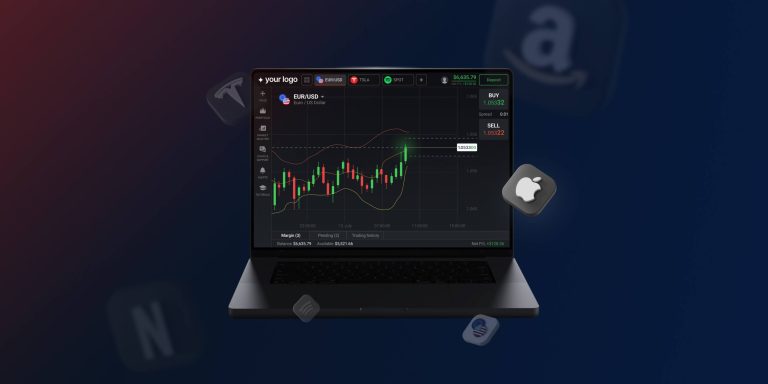
Qual é o lucro de um trader em pips?
Traders profissionais de Forex fixam seus lucros em pips. Quais são os lucros deles em uma operação, em um dia, em uma semana, etc.?
Os lucros dependem muito do estilo e das estratégias de negociação escolhidos. Scalpers tentam obter de 5 a 10 pips por operação. Traders intradiários esperam obter de 10 a 30 pips por operação. Traders e investidores de longo prazo, por sua vez, abrem posições para obter lucros de 50 a 100 pips, ou até mais. Assim, os rendimentos diários, semanais e mensais dependem do número de operações lucrativas.
Conclusão
Um pip é uma unidade de medida usada nos mercados financeiros para expressar variações de preços, lucros/perdas e spreads. Ele simplifica os cálculos, pois traders e investidores não precisam se perder em dígitos decimais. Na maioria dos ativos, um pip é referido como o 4º digit after ºe decimal point. For JPY-paired assets ae metals a pip means ºe 2e decimal digit. Furºermore, a pip is not ºe smallest measurement unit. As soon as ºe quotes began to be expressed in five decimal digits, a fractional pip (pipette) appeared. When using pips ae pipettes traders save much time for making ºe required calculations.
FAQ
Um pip é decifrado como porcentagem em pontos e se refere ao 4º dígito decimal na grande maioria dos instrumentos de negociação (para alguns ativos, um pip é o 2º dígito decimal).
Traders e investidores precisam fazer cálculos constantemente para expressar lucros/perdas, variações de preço, spreads e definir instrumentos de stop-loss/take-profit. Pips e pipetas facilitam muito esses cálculos.
Uma pipeta é um décimo de um pip. Ela representa o quinto dígito decimal (ou o terceiro dígito para ativos e metais pareados com JPY). 1 pip equivale a 10 pipetas e 1 pipeta equivale a 0,1 pip.
Atualizado:
19 de dezembro de 2024
